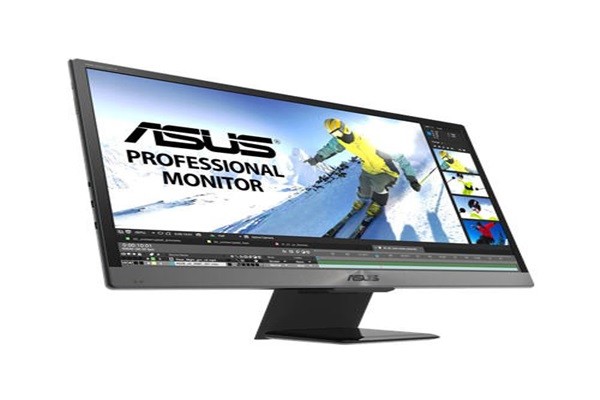Japanese and Chinese panel manufacturers are speeding up their process of developing next-generation technologies to reduce production cost of OLEDs. Their goals are to introduce prototypes faster than South Korean panel manufactures, which are the world’s best panel manufacturers. Their strategies are to mass-produce large OLEDs with competitive price to go up against 10.5th generation LCDs.
JOLED from Japan and TCL from China introduced current status of their development of inkjet printing technologies at ‘2018 OLED Korea’ seminar, which was held at Novotel Ambassador Gangnam Hotel on the 7th and the 8th. Their plans are to enter large OLED market after grabbing upper hands in next-generation technologies. Although they still need to work on more areas until they can actually mass-produce large OLEDs through inkjet printing technology, they predicted that they will be able to secure relevant technologies within a year or two as performance of equipment and materials for inkjet printing technology has improved significantly.
JOLED announced that it is currently developing inkjet printing process-based display that implements more than 300ppi resolution from 8th generation substrate. In 2017, it developed 21.6-inch 4K OLED monitor prototype for medical purposes by using inkjet printing process from 4.5th generation substrate and supplied samples of this monitor to ASUS.
JOLED decided to mass-produce 21.6-inch monitors and is preparing to invest into relevant facilities and equipment. However, whether it may or may not actually mass-produce them is uncertain due to recent financial difficulties. One of JOLED’s goal is to mass-produce inkjet printing-based OLED that can be used for high-quality tablets by achieving more than 300ppi resolution from 8th generation substrate.
21.6-inch 4K OLED monitor panel provides 204ppi resolution. 200ppi resolution is suitable for 20-inch monitors and TV panels that are bigger than 20 inches. JOLED is planning to implement high quality even from 10-inch monitors by achieving resolution higher than 300ppi.
TCL announced that it recently developed 31-inch 4K OLED that is applied with inkjet printing technology at its inkjet printing R&D open platform called ‘Juhua Printing Display Technology’. Its subsidiary called CSOT participated in this development, and this 4K OLED was produced from 4.5th generation half-cut R&D line.
TCL set a goal of securing 11th generation inkjet printing technology by 2019. CSOT, Tianma, CEC-Panda, and other universities and research institutes are developing relevant technologies together at Juhua Printing Display Technology. TCL is planning to introduce detailed specifications of its prototype at ICDT (International Conference on Display Technology), which will be held in Guangzhou next month.
“Performance of inkjet printing materials from major material manufacturers has reached significant level recently.” said James Lee, Ph.D., of TCL. “Although TCL is currently a fast follower, we are going to be a leading company in the near future that will lead future display markets by securing inkjet printing technology that will allow us to mass-produce large OLEDs.”

South Korean panel manufacturers also started developing inkjet printing technology early on. Although both LG Display and Samsung Display prepared pilot lines and continuously working on R&D, they have yet to officially mention relevant information or introduce their prototypes.
LG Display is currently operating its pilot line based on 8th generation inkjet equipment from Tokyo Electron. Samsung Display is currently developing inkjet printing technology with equipment from Kateeva and SEMES. It invested into Kateeva’s shares in 2014 and it formed a group for development of QD-OLED and inkjet technology recently to secure technologies on next-generation large displays.
BOE from China is also seen as a panel manufacturer that is showing aggressive approach in this field. It ordered Kateeva’s equipment last year that divides 8th generation mother-glass into 6 pieces and prints out one 55-inch panel. It is heard that it is preparing to jump into this market while continuously examining its project for mass-production of large OLEDs and debating between white OLED method from LG Display and inkjet printing method.
Representatives from this industry are showing concerns that South Korea can be overtaken by other countries such as China in markets for inkjet printing, which is a next-generation industry. They are focusing on the fact that there is a high chance that Chinese businesses may skip current white OLED method and go directly towards inkjet printing method. Although they believe that the chance of JOLED making investments into facilities and equipment due to its financial circumstances is low, they think that influence that JOLED will have once it starts actual mass-production will be huge since it has already secured relevant technologies.
Because Chinese businesses have recently shown interests towards JOLED and JDI as they are trying to attract foreign investments due to lack of funds, JOLED can be a potential threat for South Korean businesses in the future.
“It seems that Chinese businesses are showing more aggressive approach towards large OLED market when Samsung announced that it will not push for large OLED business.” said a representative for an industry. “Fortunately, Samsung started developing technologies for large displays once again. Although LG Display is also considering about introducing inkjet printing technology, there is a high chance that Chinese businesses will jump into this market faster than South Korean businesses considering speed of their investments and development.”
Staff Reporter Bae, Okjin | withok@etnews.com